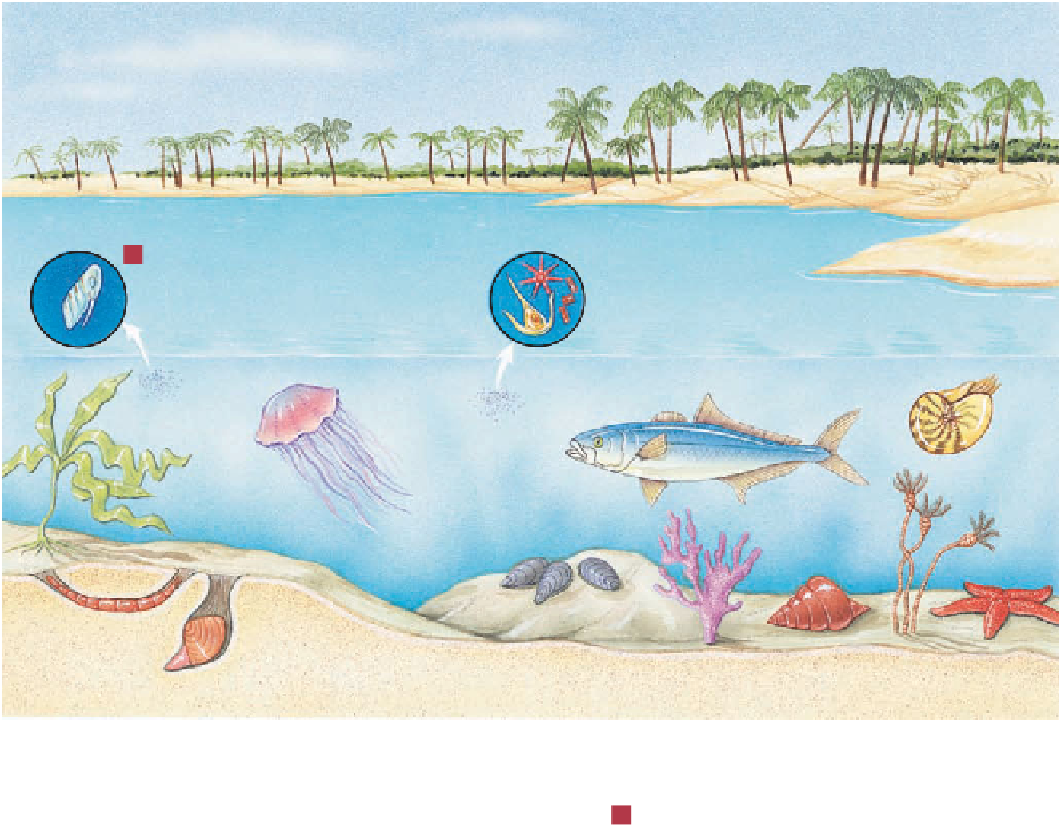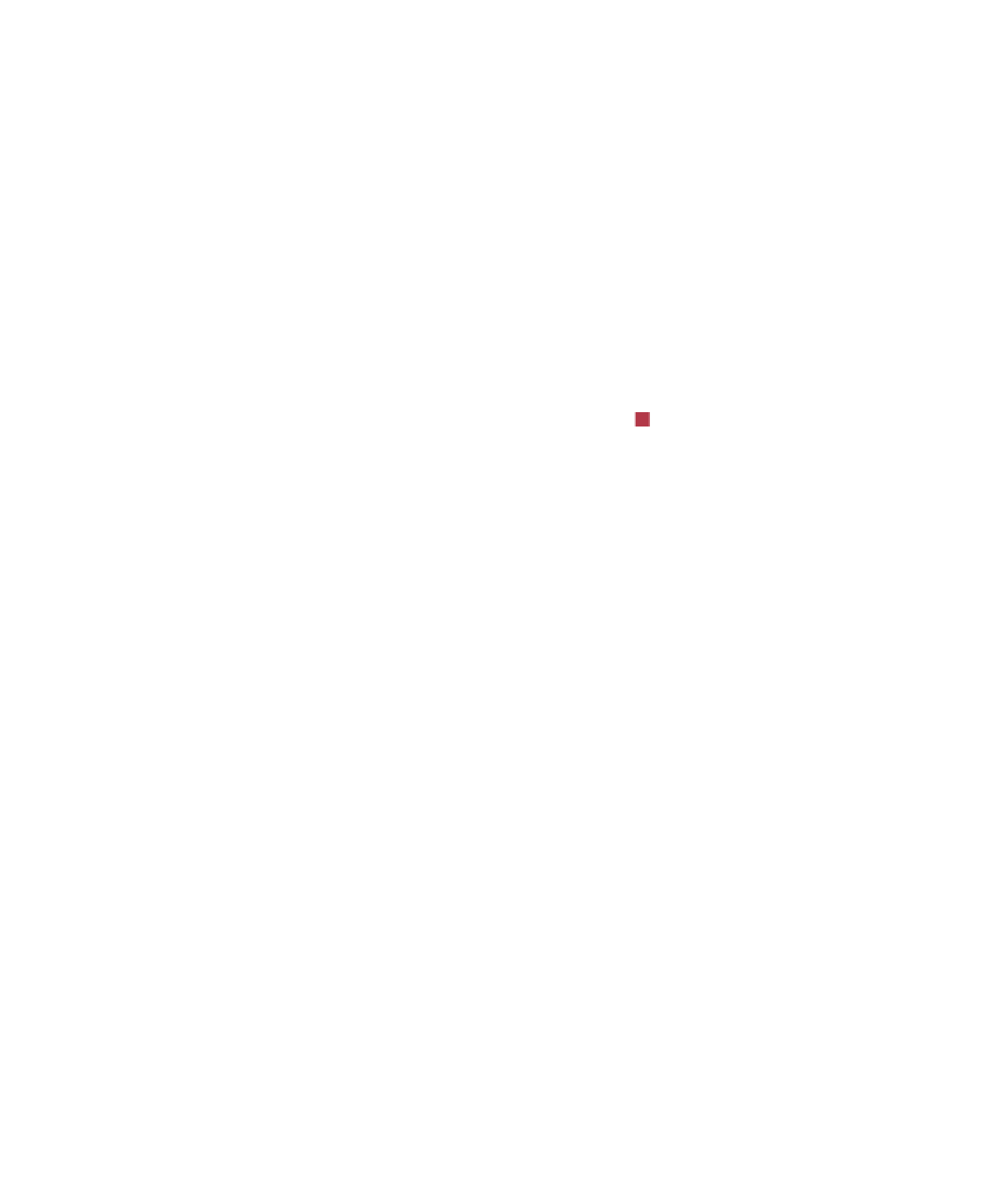Geology Reference
In-Depth Information
Zooplankton
(microscopic)
Phytoplankton
(microscopic)
a
b
Plankton
Cephalopod
e
Jellyfish
c
Nekton
Fish
d
Seaweed
f
Criniod
k
Epiflora
Epifauna
Coral
j
Bivalve
i
gastroped
l
Starfish
m
Worm
g
Infauna
Bivalve
h
◗
Figure 21.2
Marine Ecosystem Where and how animals and plants live in the marine ecosystem.
Plankton:
a
through
c
. Nekton:
d
and
e
. Benthos:
f
through
m
. Sessile epifl ora:
f
. Sessile
epifauna:
i
,
j
, and
k
. Mobile epifauna:
l
and
m
. Infauna:
g
and
h
. Suspension feeders:
i
,
j
, and
k
. Herbivores:
l
. Carnivore-scavengers:
m
. Sediment-deposit feeders:
g
.
The Cambrian Period was a time during which many new
body plans evolved and animals moved into new niches.
As might be expected, the Cambrian witnessed a higher
percentage of such experiments than any other period of
geologic history.
Although almost all of the major invertebrate phyla
evolved during the Cambrian Period (Table 21.1), many were
represented by only a few species. Whereas trace fossils are
common and echinoderms diverse, trilobites, brachiopods,
and archaeocyathids made up the majority of Cambrian
skeletonized life (
those organisms that manufacture their own food. Virtually
all marine primary producers are phytoplankton. Feed-
ing on the primary producers are the primary consumers,
which are mostly suspension feeders. Secondary consumers
feed on the primary consumers and thus are predators,
whereas tertiary consumers, which are also predators, feed
on the secondary consumers. Besides the producers and
consumers, there are also transformers and decomposers.
These are bacteria that break down the dead organisms that
have not been consumed into organic compounds, which
are then recycled.
When we look at the marine realm today, we see a
complex organization of organisms interrelated by tro-
phic interactions and affected by changes in the physical
environment. When one part of the system changes, the
whole structure changes, sometimes almost insignifi cantly,
other times catastrophically.
As we examine the evolution of the Paleozoic marine
ecosystem, keep in mind how geologic and evolutionary
changes can have a significant impact on its composition
and structure. For example, the major transgressions onto
the craton opened up vast areas of shallow seas that could
be inhabited. The movement of continents affected oceanic
circulation patterns and caused environmental changes.
Figure 21.4).
Trilobites
were by far the most conspicuous element of
the Cambrian marine invertebrate community and made up
about half of the total fauna. Trilobites were benthonic, mo-
bile, sediment-deposit feeders that crawled or swam along
the seafl oor (see Geo-inSight on pages 572 and 573).
Cambrian
brachiopods
were mostly primitive types and
were benthonic, sessile, suspension feeders. Brachiopods
really became abundant during the Ordovician Period.
The third major group of Cambrian organisms were
the
archaeocyathids
(
◗
Figure 21.5). These organisms were
benthonic, sessile, suspension feeders that constructed
reef-like structures beginning in the Early Cambrian.
◗




















Search WWH ::

Custom Search